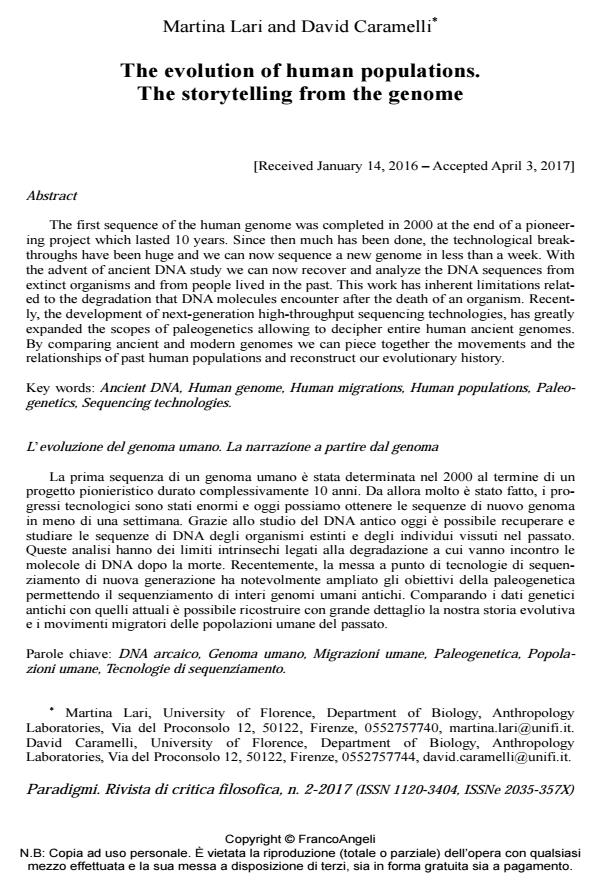The evolution of human populations. The storytelling from the genome
Journal title PARADIGMI
Author/s Martina Lari, David Caramelli
Publishing Year 2017 Issue 2017/2
Language English Pages 10 P. 113-122 File size 147 KB
DOI 10.3280/PARA2017-002008
DOI is like a bar code for intellectual property: to have more infomation
click here
Below, you can see the article first page
If you want to buy this article in PDF format, you can do it, following the instructions to buy download credits

FrancoAngeli is member of Publishers International Linking Association, Inc (PILA), a not-for-profit association which run the CrossRef service enabling links to and from online scholarly content.
The first sequence of the human genome was completed in 2000 at the end of a pioneering project which lasted 10 years. Since then much has been done, the technological break-throughs have been huge and we can now sequence a new genome in less than a week. With the advent of ancient DNA study we can now recover and analyze the DNA sequences from extinct organisms and from people lived in the past. This work has inherent limitations related to the degradation that DNA molecules encounter after the death of an organism. Recently, the development of next-generation high-throughput sequencing technologies, has greatly expanded the scopes of paleogenetics allowing to decipher entire human ancient genomes. By comparing ancient and modern genomes we can piece together the movements and the relationships of past human populations and reconstruct our evolutionary history.
Keywords: Ancient DNA, Human genome, Human migrations, Human populations, Paleogenetics, Sequencing technologies.
Martina Lari, David Caramelli, The evolution of human populations. The storytelling from the genome in "PARADIGMI" 2/2017, pp 113-122, DOI: 10.3280/PARA2017-002008